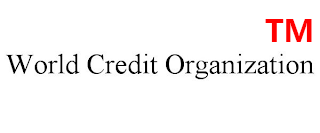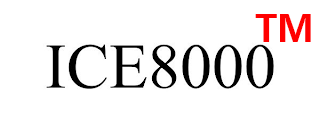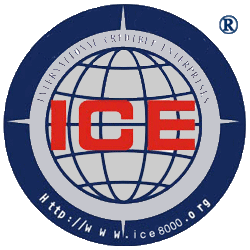ICE8000™ Infringement and Responsibility Identification Standard



ntroduction to the infringement and responsibility attribution
ICE8000™ international intgerity standard system
infringement and responsibility attribution criteria
(Version: ICE8000-177-20120305-20150928-2) (This standard) Writer: Fang Bangjian ; proposer: Fang Bangjian ; deliberative body: World Credit Organization Credit Standards Committee; effectiveness level: administrative resolution
Chapter I General Provisions
1.1 In order to reasonably identify infringements, in order to reasonably determine the responsible person of the infringement, promote social integrity, reduce transaction costs, and enhance human well-being, the World Credit Organization (WCO) develops this standard in accordance with internationally accepted legal principles and international practices.
1.2 The main legal basis for the development, application and implementation of this standard is as follows:
(1) The principle of freedom of the Constitution. The constitutions of the vast majority of countries in the world give people the freedom to defend their legitimate rights, the freedom to maintain social justice and the freedom to express their opinions.
(2) The principle of public order and goodness of law. This legal principle gives people the right to maintain social justice. The basic principles of civil law in most countries of the world include the principles of public order and good customs.
(3) The principle of good faith in law. This legal principle gives people the obligation of good faith. Most countries in the world regard the principle of good faith as the basic law of their civil and commercial laws.
(4) The principle of freedom of contract in law, also known as the principle of free agreement. This legal principle gives people the freedom to enter into a civil contract. The basic principles of civil law in most countries of the world include the principle of freedom of contract.
1.3 The conduct of the application and implementation of this standard shall be deemed to be the tripartite or multi-party contractual act of the World Credit Organization (WCO) in Delaware, USA, as an attestation or supervisor, and The relevant disputes arising from this act are applicable to and protected by the laws of the State of Delaware and the United States, and the jurisdiction is also the International Court of Ethics or the Delaware Court of the United States and the United States Federal Court. If the parties have agreed otherwise or otherwise stated in the applicable law and/or jurisdiction, the binding does not involve the World Credit Organization (WCO).
1.4 This standard is applicable to the identification of infringement and attribution of responsibility.
1.5 The identification of infringement and responsibility shall be based on the principles of objectivity, fairness, reasonableness, legality and fault.
1.6 In order to prevent moral hazard, the applicant should provide a credit card or valid identification and establish a credit file.
1.7 Liability for infringement includes legal liability and credit responsibility.
The senior personnel referred to in this standard include legal representatives, actual controllers, board members and secretary of the board of directors, members of the board of supervisors, secretaries, managers and deputy managers of the board of supervisors.
The actual controller referred to in this standard refers to the person who actually controls the behavior of the unit for various reasons, although the name is not the legal representative or the highest leader of the decision-making system.
The ICE8000 credit institution referred to in this standard, also known as the ICE8000 international credit institution or the World Credit Organization (WCO) member credit institution, refers to the requirements of the ICE8000 international credit standard system in terms of knowledge structure, work ability and professional ethics, and is awarded the World Credit Organization. (WCO) certification, in the credit evaluation and other credit practice work have the right and obligation to comply with the ICE8000 international credit standard system standards, to prevent their own abuse of credit evaluation and other rights or damage to the legitimate rights and interests of other types of credit companies and other credit practitioners. The ICE8000 credit institution is a member unit of the World Credit Organization (WCO), not a branch, representative office, agency or subordinate organization of the World Credit Organization (WCO). According to the business scope of ICE8000 credit institutions, ICE8000 credit institutions can also be called ICE8000 credit reporting agencies, ICE8000 Lixin institutions, ICE8000 training institutions, and ICE8000 management consulting organizations.
The term “legal liability” as used in this standard refers to the legal sanctions that the actor should bear for its infringement, including civil liability, administrative liability, and criminal liability. This liability is borne by the parties and/or the effective complaints of the state department, and is a legal punishment. .
The credit liability referred to in this standard refers to the reputation loss, opportunity loss and psychological cost that the actor should bear for its infringement. The responsibility is borne by the true dissemination of credit information and belongs to social punishment.
1.8 The appraisal opinions issued in accordance with this standard are only the principled appraisal opinions made on the premise that the evidence materials are true and correct. The substantive appraisal opinion on whether a tort is true and the responsibility is vested according to the ICE8000 International Credit Standard System International Credit Dispute Arbitration Standard or the ICE8000 International Credit Standard System International Credit Dispute Trial Standard.
For the appraisal of the principle of infringement and responsibility, the words “suspected” should be indicated.
Whether it is a principled appraisal or a substantive appraisal, it is a view based on presumed facts or real facts and is only for reference by all parties concerned. Moreover, the appraisal opinion cannot substitute for the independent thinking and independent judgment of the relevant parties. The relevant parties should read the appraisal opinions comprehensively and rationally, decide their own reference value, and independently bear the consequences of misreading due to out of context.
1.9 All parties applying this standard shall abide by the principle of good faith, moral bottom line and social responsibility bottom line in the process of applying this standard, and exercise and assume the rights and obligations stipulated in this standard.
1.10 All parties to this standard are deemed to have fully understood and committed to comply with all the provisions of this standard. However, if any party to this standard finds any unfairness in any of the provisions of this standard, it has the right to publicly declare that it is not subject to public disclosure of the relevant circumstances and reasons and written notice to the World Credit Organization (WCO). Terms and conditions.
Chapter 2 Standards for Suspected Infringements or Infringements
2.1 In the case of a written infringement allegation issued by the credit institution, after the credit institution has notified the accused party that the accused party has not filed a written objection, the infringement of the above allegation shall be identified as a suspected infringement.
2.2 In the case of a written infringement allegation made by the credit institution, after the credit institution has notified the accused party, the accused party acknowledges the infringement fact or, although the objection is filed, but the evidence of the accused party can still prove the existence of the infringement fact, the infringement fact of the above allegation can be identified. For infringement.
2.3 Infringement behavior can be identified as untrustworthy behavior if it meets the standards of untrustworthy behavior. For details, please refer to “ICE8000 Untrustworthy Behavior and Qualification Identification Standards”.
Chapter IV Responsibility of Tort
3.1 If a unit engages in tort, its legal responsibility shall be borne by the unit and/or relevant personnel according to law; its credit responsibility shall be borne by the high-level personnel of the unit or unit and the staff member who is at fault for the infringement. A staff member who is at fault for an infringement shall not deny his/her credit liability on the grounds of his or her duties.
3.2 If a natural person engages in an infringing act, his or her legal liability shall be borne by the person and/or the relevant person concerned; his credit responsibility shall be borne by himself and the person concerned with the fault of the infringement.
Minors under the age of 10 and other persons who are not civilly capable according to law shall not be liable for credit. If the infringement is carried out under the supervision of another person, the instigator shall bear the credit responsibility. Natural persons who are over ten years old but under the age of 18 or other persons who are legally restricted in their capacity for civil conduct shall bear credit responsibility for acts that are appropriate to their age and intelligence.
3.3 In the case of a tort in a certain area, if the specific actor can be identified, the responsibility for the breach of trust will be directly attributed to the specific actor according to the relevant provisions of this standard; if the specific actor is not determined, the legal responsibility is not borne, and the credit responsibility is The entire area (except for publicly opposing the infringement) bears the following, and the order of attribution is as follows:
(1) The region is the first credit owner;
(2) The regional decision-making system (such as the Parliament) and its members (such as: members of Parliament) are the second credit owners;
(3) The regional administrative system and its senior personnel are the third credit owners;
(4) The regional judicial system and its members are the fourth credit owners;
(5) The regional administrative department and its senior personnel whose duties are related to the infringement are the fifth credit owner;
(6) The ordinary people who actively support the infringement (referring to people other than the top five, the same below) are the sixth creditors;
(7) The ordinary people who did not publicly oppose the violation were the seventh credit owner.
3.4 If a unit engages in tort, the order of credit liability is:
(1) The unit is the first credit owner;
(2) The highest leader of the unit decision-making system (the corresponding chairman of the board of directors, etc.), the legal representative and the actual controller are the second creditors;
(3) The top leader of the unit execution system (the general manager and other corresponding personnel) is the third credit owner;
(4) The members of the unit decision-making system (directors, directors, etc.) and the members of the supervision system (supervisors and other corresponding personnel) are the fourth credit owners;
(5) Other units (Note: Others refer to those other than the above three items) are the fifth credit person;
(6) The middle management personnel or ordinary employees who intentionally participate in the infringement act are the sixth credit responsibility person;
(7) The middle management or ordinary employees who are involved in the negligence or are forced to participate in the infringement are the seventh credit owner.
For the middle management or ordinary employees involved in the infringement, if there is no evidence to prove that they are the sixth credit owner, they shall be the seventh credit owner.
If the second, third, fourth, fifth, sixth or seventh order credit person is not found or not identified, it shall be indicated that the person responsible for the order or “to be checked” has not been found.
3.5 If a natural person engages in infringement, he is the person responsible for credit.
Where more than 3.6 natural persons are engaged in infringement, the order of credit responsibility is:
(1) The highest leader or supreme organizer of the infringement is the first credit owner;
(2) The highest planner of the infringement is the second credit owner;
(3) Those who play an important role in the leadership, organization or planning of the tort are the third credit owner;
(4) The relevant person who intentionally participates in the infringement is the fourth credit owner;
(5) The person involved in negligence or being forced to participate in the infringement is the fifth credit owner.
The top leader, organizer, and top planner are both one person, and the first credit owner and the second credit owner are both individuals.
If the second, third, fourth and fifth credit owners are not found, they shall indicate that the person responsible for the order or “to be checked” has not been found.
Where more than 3.7 units jointly engage in infringement, after determining the order of unit credit responsibility in accordance with Article 3.6, the credit responsibility shall be vested separately according to the unit.
Where a natural person other than an employee of a unit or unit engages in torts jointly, after determining the order of credit responsibility of each party in accordance with Article 3.6, the credit responsibility shall be vested separately according to the unit and the natural person.
3.8 Responsible person/unit/region/person/organization shall be a temporary vigilant credit identity, and the credit identity shall be automatically cancelled after it corrects or repairs the infringement.
Chapter IV Principled Appraisal Procedure
4.1 The principle identification procedure for the infringement and responsibility attribution is as follows:
(1) Application. The parties concerned filed an application with the ICE8000 credit institution, promised to abide by this standard, and promised to abide by the principle of good faith, moral bottom line, and social responsibility bottom line to submit relevant evidence and materials, and at the same time make a statement of additional conscience vows.
(2) Formal review and delivery. The ICE8000 credit institution shall conduct a formal review of the relevant application materials. If the application materials are complete, the applicant shall be served with the “Notice of Infringement and Responsibility Ownership Appraisal Opinions” and the objection period of 7 working days. If the application materials are incomplete, return the application for identification and explain the reasons.
(3) Objection. If the accredited person expressly declares that there is no objection, there is no objection. If the accredited person has no legitimate cause, if the right of dissent has not been exercised within the time limit, it shall be deemed as no objection. If the appraiser promptly submits an overdue cause to the ICE8000 credit institution, the ICE8000 credit institution may extend the term of the dissent right according to the actual situation. When the accredited person exercises the right of dissent, he shall promise to abide by this standard in accordance with the principle of reciprocity, and promise to abide by the principle of good faith, the moral bottom line, the social responsibility bottom line to exercise the right of dissent, and the written statement of the additional conscience vows. If the accused person exercises the right of dissent, he refuses to make the above promises and statements in writing, and the objection is invalid.
(4) Issue the principle identification result. If the appraiser does not effectively exercise the right of dissent, the ICE8000 credit institution shall issue to the applicant the “Procedures for the Appraisal of Infringement and Responsibility”. Otherwise, the applicant shall be issued a Notice of Termination of the Principle of Attribution of Tort and Responsibility, and if the applicant or the relevant party believes that the appraiser has violated the principle of good faith and exercises the right of dissent, he may be held liable for breach of trust.
4.2 In the course of practicing, the ICE8000 credit institution may issue a principled appraisal opinion on the discovered infringements and their responsibilities in the practice documents, but the relevant practice documents shall be served on the parties, and the parties shall be informed of the objection period according to the relevant practice standards. Objection method.
When people use the ICE8000 international credit standard system standard to publish credit evaluation information, they can issue a principled appraisal opinion on the relevant infringement and responsibility in the relevant documents, but they should inform the parties of the objection period and the objection method according to relevant standards.
Chapter V Liability for Breach of Contract and Method of Investigation
5.1 If the party violates the provisions of this standard, it shall bear the following liability for breach of contract:
(1) The corresponding legal liability, namely: the legal punishment prescribed by the relevant applicable law.
(2) Corresponding credit responsibility, that is, to bear credit punishments such as internal complaints, public complaints, credit warnings, internal exposure, public exposure, joint exposure, etc.
(3) The corresponding industry self-discipline responsibility, namely: announcement of criticism, fines, cancellation of credit card, prohibition of self-discipline and other disciplines.
(4) If the breach of contract causes losses (including material damage and mental damage) to others, it shall be liable for compensation. If the breach of contract constitutes a malicious dishonesty, it shall also make punitive damages to the infringed person in accordance with international practice and the principle of common law.
5.2 The responsibility for breach of contract in this standard shall be based on the principle of ignoring:
(1) Only the aggrieved party will take the initiative to pursue the investigation, and the defaulting party will bear the corresponding liability for breach of contract;
(2) The aggrieved party has the right to decide whether to initiate the corresponding accountability procedure for breach of contract;
(3) The aggrieved party has the right to understand the defaulting party or reach an agreement with the defaulting party.
5.3 For employees or agents who participate in, execute, or assist the parties to breach the contract, the aggrieved party has the right to pursue its corresponding responsibility unless it proves that it is not at fault.
5.4 Method of investigation of breach of contract liability:
(1) According to the "ICS8000 International Credit Standard System Internal Complaint Standard" or "ICE8000 International Credit Standard System Public Complaint Standard" or "ICE8000 International Credit Standard System Credit Warning Standard" or "ICE8000 International Credit Standard System Internal Exposure Standard" or "ICE8000" International Exposure Standards for Public Credit Standards or Joint Exposure Standards for ICE8000 International Credit Standards System for credit complaints and credit penalties;
(2) Applying for arbitration under the International Credit Dispute Arbitration Commission in accordance with the ICE8000 International Credit Standards System International Credit Dispute Arbitration Standard, without the need to submit a separate arbitration agreement;
(3) Apply to the International Moral Court for trial in accordance with the ICE8000 International Credit Standards System International Credit Dispute Trial Standard;
(4) If the defaulter has the membership of the World Credit Organization (WCO), the parties also have the right to make a complaint in accordance with the World Credit Organization (WCO) Member Supervision Standards;
(5) File a lawsuit in the US Delaware Court or the US Federal Court in accordance with the laws of the State of Delaware or the United States federal law.
5.5 The World Credit Organization (WCO) shall bear economic compensation for its own faults, and the expenditure for economic compensation shall be included in the financial plan of the World Credit Organization (WCO) for the next year. If the economic compensation is large, compensation shall be made in each year.
After accepting economic compensation, the World Credit Organization (WCO) has the right to recover losses from units or individuals responsible for acts of dishonesty with gross negligence or subjective intent.
Chapter VI Supplementary Provisions
6.1 The methods of “delivery” and “notice” as mentioned in this standard include:
(1) Integrity letter delivery\notice. The sender/notifier can send a letter of integrity to the recipient/notice according to the “ICE8000 International Credit Standard System Integrity Letter Management Standard”. The time of receipt of the document as specified in the standard is the delivery/notification time.
(2) Regular letter delivery\notice. The sender/notifier may send a regular letter to the recipient/notifier, and the time of receipt of the letter by the person to be served, the person to be notified and his/her employee, adult family member or agent shall be the time of delivery/notification.
(3) Network announcement delivery\notification. If the sender/notifier cannot be served by letter, the right to use the ICE8000 International Credit Standard System Document Announcement Delivery Standard shall be served by the network announcement method. If the delivery/notification is made by means of network announcement, the delivery/notification time will be the 60th day after the first publication of the delivery announcement.
(4) Other legal and reasonable delivery/notification methods.
6.2 This standard shall be implemented as of the date of promulgation.
6.3 The terms involved in this standard, if their meaning is not agreed in this standard, the meaning of which is described in the “International Credit Industry Terminology of ICE8000 International Credit Standard System”.
6.4 All relevant parties submit various types of materials submitted to the World Credit Organization (WCO) (or ICE8000 Credit Agency) in accordance with this standard. For the copyright agreement, see the ICE8000 International Credit Standard System Document Copyright Management Standard.
6.5 If all parties concerned know or ought to have known that any of the terms or conditions of this standard have not been complied with, but still do not expressly file a written objection in time for this non-compliance, it is deemed to waive their right to file an objection. The waiving party shall bear the legal consequences such as losses caused by the waiver, and the World Credit Organization (WCO) and other parties shall not be responsible for this.
6.6 This standard will be revised and improved. All parties applying this standard should pay full attention to the revision of this standard and apply the latest version of this standard, but the behavior that occurred before the revision of this standard may not be subject to the new revised clause. The official website of the latest Chinese version of this standard is: /aenhw/gc/177.html .
6.7 The copyright of this standard belongs to the World Credit Organization (WCO), members can use it for free and unlimited use; non-members can use it for free, study, training, research, self-use, reprint, citation, adaptation, reference, reference under the premise of indicating or declaring the source. , reference. No unit or individual may plagiarize plagiarism or disguise plagiarism or otherwise infringe. Otherwise, we will jointly expose the infringing units, individuals and related personnel after the investigation of the infringement facts is clear (to issue a credit wanted order to the society). And reserves the right to pursue their legal responsibility. Do not infringe or infringe.
6.8 The standard version number is expressed as: ICE8000-abcd, where: the front-end ICE8000 indicates that this standard belongs to one of the standards of the ICE8000 international credit standard system; a is the serial number of the standard in the ICE8000 system standard, if this standard is Abolished, the serial number is sometimes transferred to other standards; b is the initial writing time of this standard; c is the latest revision time of this standard; d is the number of revisions of this standard.
6.9 This standard is interpreted by the World Credit Organization (WCO).
Your current location:
ICE8000 Infringement and Responsibility Identification Standard
- The last standard: ICE8000 illegal behavior and responsibility attribution criteria
- Next standard: ICE8000 internal complaint standard
- Closely related: World Credit Organization (WCO) Member Supervision Standard
- Closely related: World Credit Organization (WCO) Charter
- Back to: Complete Works of ICE8000 International Credit Standard System Standards
and Reduce transaction costs
and Improve human welfare
and Promote human progress
World Credit Organization (WCO) © 2002-2026,
Infringement will be investigated (a credit Wanted warrant will be issued)


